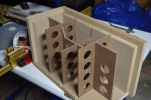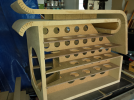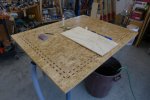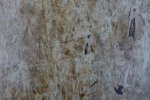carbidetooth
Member
Boston Jack, I think there's an important thing to consider in your boat analogies concerning waterproofing. Bulk water is a larger molecule than is water vapor. For reference think of Gore-Tex or similar fabric that breathes vapor yet repels water. What you're dealing with in a home environment is vapor (humidity). That is unless you intend to float them in the bathtub!
I doubt you could ever achieve a perfect seal in a project such as yours that would encapsulate wood to the point of being vapor impermeable. Again, the best you can hope for is to slow down and minimize that natural "respiration" of ambient humidity in and out of wood.
This is all pretty deep into theory but is helpful is determining what the best path to the destination is. As with many things, there are trade-offs. Determining which trade-offs are acceptable for the project at hand becomes the decision maker.
I doubt you could ever achieve a perfect seal in a project such as yours that would encapsulate wood to the point of being vapor impermeable. Again, the best you can hope for is to slow down and minimize that natural "respiration" of ambient humidity in and out of wood.
This is all pretty deep into theory but is helpful is determining what the best path to the destination is. As with many things, there are trade-offs. Determining which trade-offs are acceptable for the project at hand becomes the decision maker.
Last edited:




